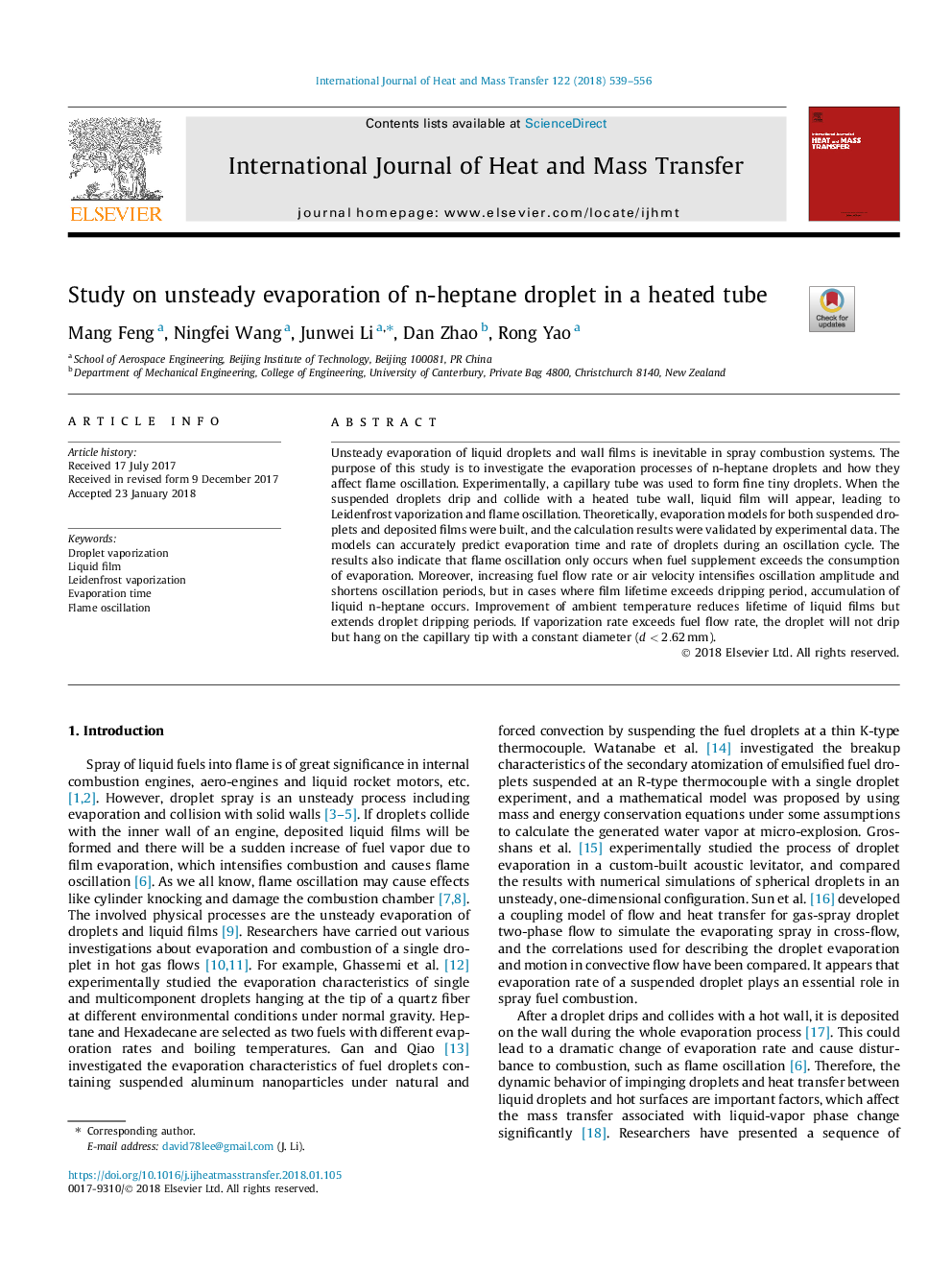| Article ID | Journal | Published Year | Pages | File Type |
|---|---|---|---|---|
| 7054392 | International Journal of Heat and Mass Transfer | 2018 | 18 Pages |
Abstract
Unsteady evaporation of liquid droplets and wall films is inevitable in spray combustion systems. The purpose of this study is to investigate the evaporation processes of n-heptane droplets and how they affect flame oscillation. Experimentally, a capillary tube was used to form fine tiny droplets. When the suspended droplets drip and collide with a heated tube wall, liquid film will appear, leading to Leidenfrost vaporization and flame oscillation. Theoretically, evaporation models for both suspended droplets and deposited films were built, and the calculation results were validated by experimental data. The models can accurately predict evaporation time and rate of droplets during an oscillation cycle. The results also indicate that flame oscillation only occurs when fuel supplement exceeds the consumption of evaporation. Moreover, increasing fuel flow rate or air velocity intensifies oscillation amplitude and shortens oscillation periods, but in cases where film lifetime exceeds dripping period, accumulation of liquid n-heptane occurs. Improvement of ambient temperature reduces lifetime of liquid films but extends droplet dripping periods. If vaporization rate exceeds fuel flow rate, the droplet will not drip but hang on the capillary tip with a constant diameter (d<2.62mm).
Related Topics
Physical Sciences and Engineering
Chemical Engineering
Fluid Flow and Transfer Processes
Authors
Mang Feng, Ningfei Wang, Junwei Li, Dan Zhao, Rong Yao,
